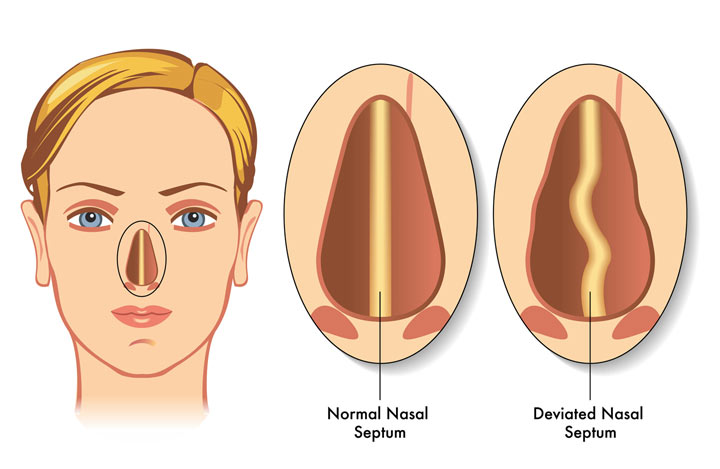DEVIATED NASAL BONE
CAUSES
For some people, a deviated septum is present at birth — occurring during fetal development or due to injury during childbirth. After birth, a deviated septum is most commonly caused by an injury that moves your nasal septum out of place. Risk factors include: Playing contact sports.
What is a deviated septum?
A deviated septum is when the bone and cartilage that divides your nasal cavity is off-center. Your nasal septum separates the right and left sides of your nasal cavity. It’s why you have two nostrils.
Up to 80% of the general population has nasal septum deviation. Some people don’t even realize they have a deviated septum because they don’t have symptoms. But for some, a deviated septum can cause breathing concerns, headaches and other issues.
What are the symptoms of a deviated nasal septum?
People with a severely deviated septum may notice a change in the shape of their nose.
Other deviated septum symptoms may include:
- Difficulty breathing out of one or both nostrils.
- Headaches.
- Facial pain.
- Nasal congestion.
- Noisy breathing (stridor).
- Nosebleeds.
- Chronic sinusitis (inflammation of your sinuses).
- Snoring.
- Sleep apnea.
What are the complications of nasal septum deviation?
Minor nasal septum deviation may not cause any complications at all. But if you have a severely deviated septum, you may develop complications, including:
- Chronic sinus issues.
- Sleep apnea.
- Snoring or loud breathing during sleep.
- Nasal congestion.
- Nosebleeds.
- Dry mouth (xerostomia).
How do healthcare providers treat a deviated septum?

